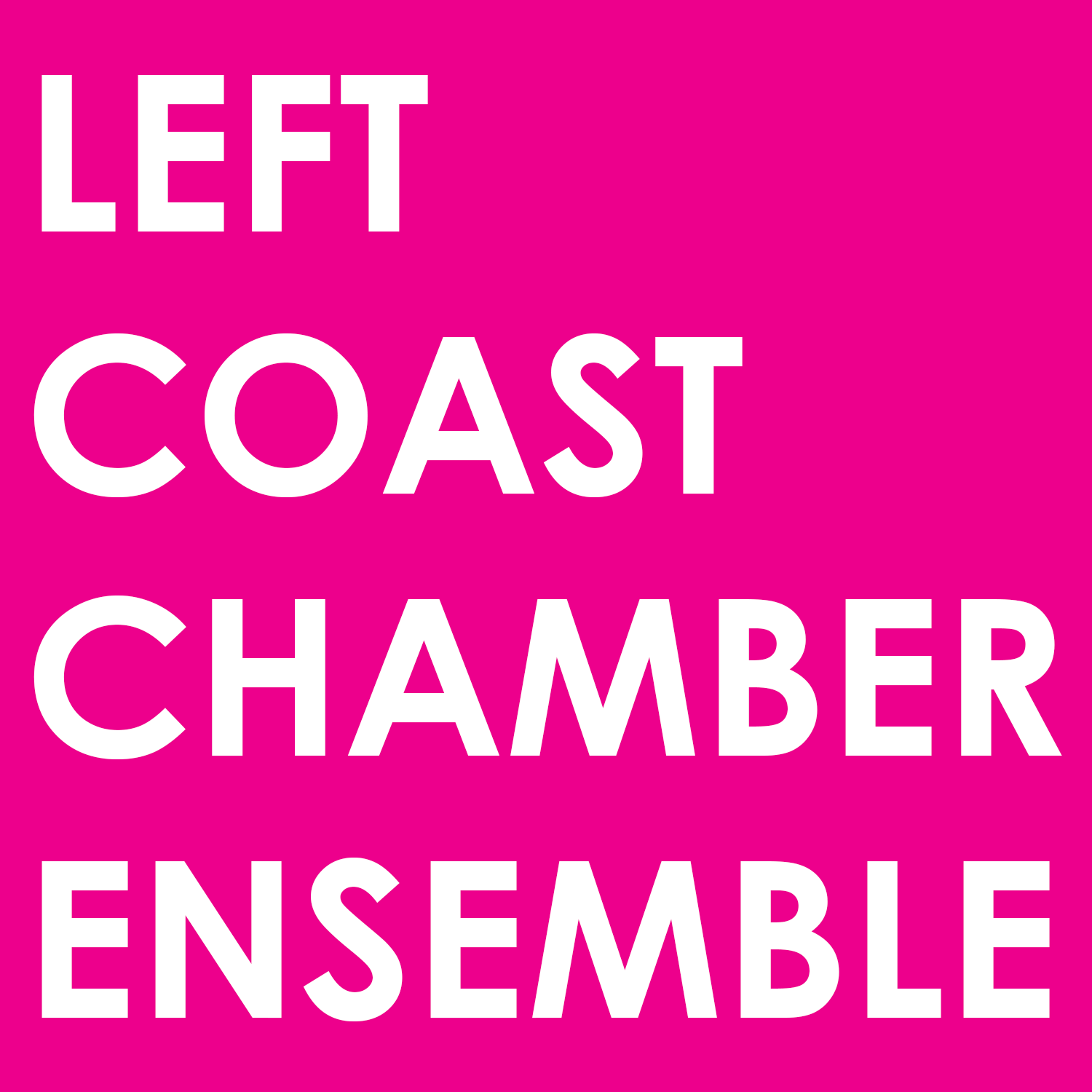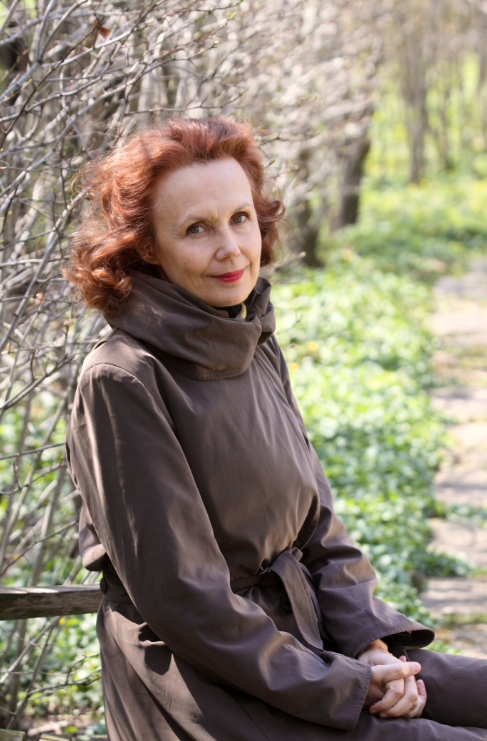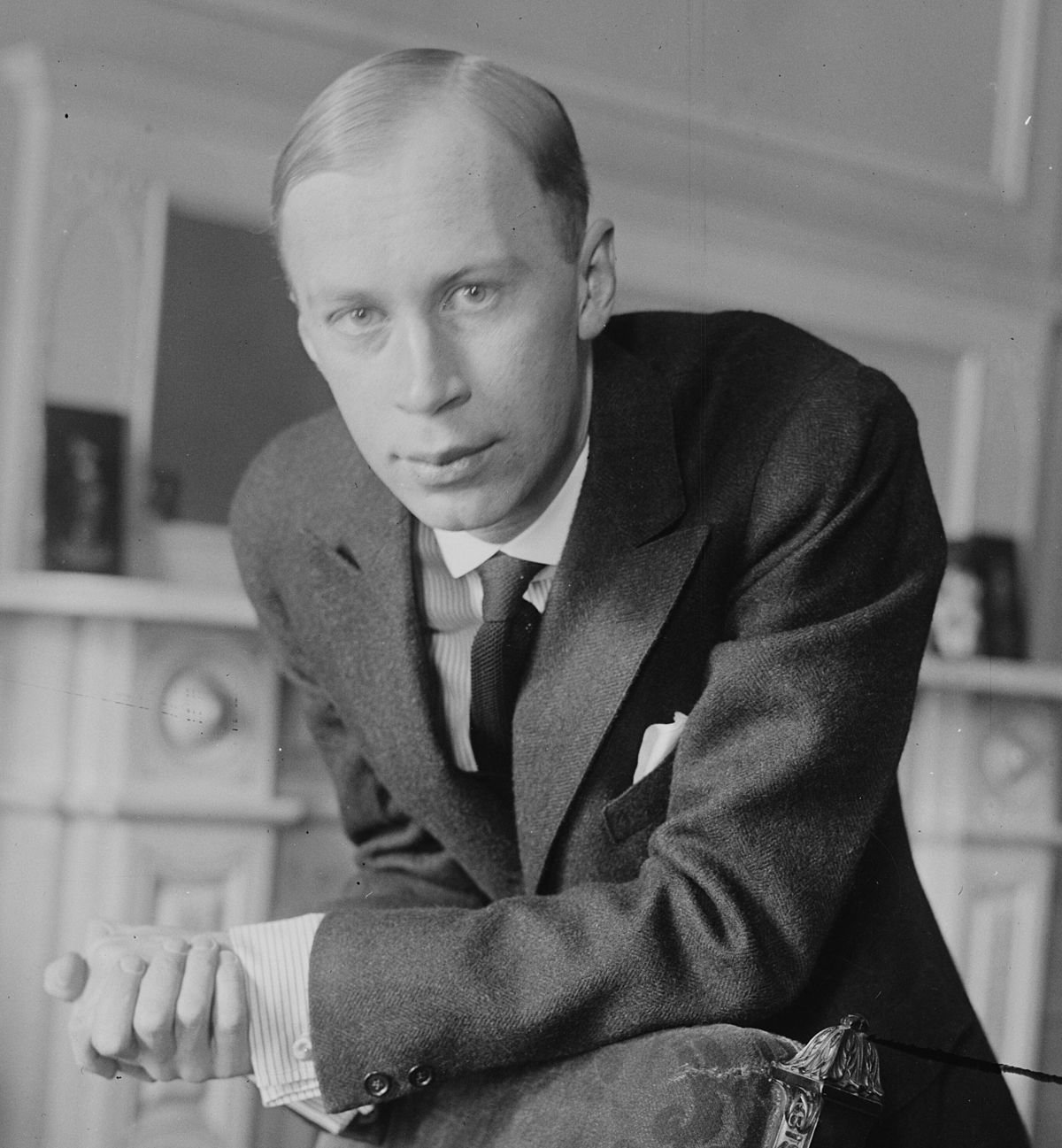Saturday is sold out!
tickets still available for Sunday’s 4pm matinee at Noe Valley Ministry in San Francisco.
Butterflies, Moons, and Mirrors
A Saariaho Celebration
Kaija Saariaho’s rapt attention to every sound is remembered and explored in this concert for flute, cello and piano. Her music invites the listener to hear the pieces that surround it — Prokofiev’s Flute Sonata and exciting works by California composers Kay Rhie and Monica Chew — from various different angles.
Program includes:
Kaija Saariaho - Sept Papillons
Kaija Saariaho - Oi Kuu
Kaija Saariaho - Mirrors
Kaija Saariaho - Dolce Tormento
Kay Rhie (Pathways Mentor) - Three Miniatures for Solo Piano
Sergei Prokofiev - Flute Sonata in D Major, Op. 94
Monica Chew - What comes before (WORLD PREMIERE)
Artists
Allegra Chapman, piano
Leighton Fong, cello
Stacey Pelinka, flute
Meet the Composers
-
Kaija Saariaho
Sept Papillons
Note by the composer
Sept Papillons was the first piece Saariaho wrote after her opera L’Amour de loin, and it was partly written during the rehearsals of the opera in Salzburg. One can sense the desire to find a new world, which has nothing to do with the opera neither in style nor in language. From the mataphors of the opera which all have an eternal quality — love, yearning, and death — she moved now to a metaphor of the ephemeral: butterfly.Also, from the long time-spans of the opera she moved to these seven miniatures, which each seem to be studies on a different aspect of fragile and ephemeral movement that has no beginning nor end.
Kaija Saariaho
Oi Kuu
Note by the composerOi Kuu, freely translated “for a moon,” marks a small break between two large orchestral works, Du Cristal and A la Fumée. It consists of elements which came to my mind when searching for a common denominator for bass clarinet and cello; similar and different articulations; different colors in the same register. Oi Kuu was written at the request of Kari Kriikku and Anssi Karkttunen and is dedicated to them.
Kaija Saariajo
Mirrors
Note by the composerMirrors is a piece written originally for the CD-Rom Prisma dedicated to my music. In the context of the CD-Rom, the user can build and play his own versions of Mirrors by combining pre-defined fragments. Because it was written for this purpose, the piece is built in such a manner that it can be reconstructed in multiple versions. The fragments of the game are the passages separated with double bar.
The existing score is my own version of Mirrors, but musicians are welcome to construct their versions of it. They should, anyway, try to follow the ideas I had about musical mirrors: There should be always a mirror in one or several of the following musical dimensions: rhythm, pitch, instrumental gesture or timbre. The mirror can be horizontal, between flute and cello (bars 4-5: rhythm mirror; bar 17: gesture, etc.) or vertical (bars 57-58: timbre; bars 65-66: flute gesture, cello gesture, rhythm and pitch).
Kaija Saariaho
Dolce Tormento
Note by the K.S. Camilla HoitengaWith a duration of 5 to 6 minutes, Dolce Tormento is relatively short, but, as the title suggests, full of “sweet torment” in the character of the music. The text is from a sonnet of Petrarch.
But there are also “sweet torments” for the player! Kaija chose the piccolo for this piece because we had not yet explored combining voice with this instrument. Both the high range and limited resonance of the piccolo, as well as the nature of the Italian language posed new challenges in developing a musical polyphony.
Of all her flute works this is the most freely notated, and interpretation is a further challenge, especially for flutists not familiar with Kaija Saariaho’s musical language. I, of course, am steeped in it, and since she was writing for me, writing rather quickly besides, the score is more or less in “shorthand,” which she knew I’d be able to understand.
The usual Saariaho vocabulary is present: air sounds, controlled vibrato, glissandi, trills, multiphonics, use of the voice, and layers and transitions of all these. But there are no bar lines, no tempo markings beyond “rit. A tempo” (three times on the last page), no dynamics, and a minimum of musical instructions: “Sempre dolce, espressivo, libero” at the beginning, then “piu agitato,” “molto rubato, espressivo” and “calando” toward the end. Traditional notation is used for the rhythmic values of the pitches, but the way the notes are spread out on the staff plus the way the phrases of the text are inserted without indication of duration suggests more a “spacetime” notation/interpretation than in her other scores.
Two further hints toward interpretation appear in the printed score under “Performance Notes”: “One characteristic of this piece is an unstable playing between octaves, with the desired sound vacillating freely between the octaves with frangile expression.” “The text should always be recited between whispering and sotto voce, in such a way that the given pitch resonates either as air or tone.”
Monica Chew
What comes before
Note by the composer
When Matilda Hofman invited me to write for Left Coast Chamber Ensemble’s tribute concert to Kaija Saariaho, I was in equal parts delighted and terrified to be on the same program. Saariaho’s control of color and texture is astonishing, especially when writing for her favorite instruments, alto flute and cello. It has been a joy to study Saariaho’s works, in particular Sept Papillons and Couleurs du vent. During my time with these pieces I felt inspired to create a new work using Saariaho’s vocabulary, in an attempt to broaden my own vocabulary. I took a cue from remix culture and created a collage of sounds from Sept Papillons and Couleurs du vent as a companion to my own piano writing and also improvised piano parts using Sept Papillons as a guide. The title What comes before is therefore both a reference to the wondrous, ecstatic burden of existing literature as a new music composer, and a literal description of the flute and cello parts, which I chopped and reassembled from Saariaho. One might consider What comes before a turntablist impression of Saariaho’s music.Sergei Prokofiev
Flute Sonata in D major, Op. 94
Note by Emily ThomasSergei Sergeyevich Prokofiev (1891-1953) was a Russian composer who spent the majority of his life walking the fine line between artistic freedom and political compliance during the dawn and decay of the Soviet Union. When he was only 14 years old, Prokofiev enrolled at the Saint Petersburg Conservatory, where he developed an indifference toward the largely classical — or as he considered it, “square” — compositional techniques he was forced to subscribe to in his classes; he more readily spent his time in circles such as Saint Petersburg’s Evenings of Contemporary Music, where he performed his own daring piano compositions, and where his liberal use of chromaticism and dissonance was not frowned upon but was rather embraced and even celebrated. He soon gained a reputation, for which he was at once venerable and notorious, for his tendency toward invention even within such popular genres as sonatas, symphonies, ballets, concertos, and operas. Indeed, Prokofiev’s compositional skill seemed to defy the bounds of genre, not because he flouted the notion altogether but because he could so masterfully manipulate whatever music he wished to compose to fit neatly within whatever genre he asked of it — or, as it turned out, whatever genre he was asked to ask of it.
Though he traveled extensively abroad — arriving first in San Francisco in 1918 before proceeding to compose in New York City, Paris, and other artistic hubs — Prokofiev eventually conceded a decade later, in the midst of an international Great Depression, that his music was unlikely to receive adequate funding anywhere except in the Soviet Union. There, he lived the remainder of his life under scrutiny of the Soviet Union, an entity whose nebulous doctrines in turns glorified and ridiculed his music: In 1946, his Piano Sonata No. 8 won a Stalin Prize; only two years later, the very same work was banned nationally from all performance. Prokofiev's main offense in the eyes of the Soviet Union was his “renunciation of the basic principles of classical music,” an outlook which produced, as they saw it, not music but “cacophony.” Such music was considered by Soviet standards inaccessible to the common man and, therefore, vain and “undemocratic.” Among the composers accused were Dmitri Shostakovich, who seemed unable to resist the appeal of Prokofiev’s music despite his most earnest efforts to do so, and Nikolai Myaskovsky, a composer long renowned for his symphonies and Prokofiev’s lifelong friend.
The Flute Sonata in D major, Op. 94, was composed in 1943 while Prokofiev was living briefly in modern-day Kazakhstan, still well within the sights of Soviet authorities. It is made up of four movements, each of which is defined, with a strategic carefulness, by a form or style that would have commonly appeared in the four-movement sonata structure popularized during the classical period. Prokofiev has meticulously shaped his musical material to fit within the exposition-development-recapitulation of sonata form (mvt. 1), the A-B-A’ of the scherzo (mvt. 2), the quiet of the obligatory slow middle movement (mvt. 3), and the recurrent episodes of the rondo (mvt. 4). It is the musical material within these structures, however, that offers glimpses into Prokofiev’s subtle resistance to outright historical convention and mass accessibility, a resistance which manages to exist directly alongside his necessary compliance to the classical, “democratic” traditions he was forced to champion. Where a formulated sequence of chords would have been used to prepare a proper classical modulation, Prokofiev relies mostly on unapologetic chromatism; where typical, “square” melodic phrase structures would have threatened to restrict his compositional voice, Prokofiev invents new ways of speaking. Within the adventurous music of the Flute Sonata lives the same youthful proponent of new music who made waves in the Saint Petersburg music scene even while flunking his composition courses, who never ceased composing even in the midst of brutal critiques by concertgoers that wielded unimaginable power. Prokofiev would never again know true artistic freedom — his death was followed by that of Joseph Stalin by less than an hour — but his voice would always somehow manage to ring out even in his most prescribed musical works. And though many attempted to silence it, his is the voice that is still heard ringing today.
Kay Rhie
Three Miniatures for Solo Piano
Note by the composerThree Miniatures for Solo Piano was originally written in 2003 and its middle movement was recently revised in 2024. I had left my hometown in Los Angeles in 2002 to a remote town in upstate NY and my first months there gave me terrible homesickness. I felt that I was constantly floating in the sea of new people, new perspectives and often misunderstandings.
The first movement, Floating depicts growing and waning waves against which a lone buoy struggles to keep marking its place. The buoy, or the motif of minor third (G-B flat), opens the piece. The small and big waves of chords soon envelop it to make it part of a bigger chord but the ‘buoy’ always resurfaces from under the sea, to anchor itself and keep from ‘drowning’. This movement was inspired by my first discovery of the colorful chords that came from the lineage of Debussy-Messiaen-Murail.
The second movement, A Center of Resistance is rigorous as well as ferocious at times with energy and momentum that sound nearly ‘out of control’. This movement depicts a force that resists its ‘vortex,’ metaphorically. The vortex is represented by the center, the physical center of the instrument around the middle C. What resists the ‘vortex’ is the symmetrical placement of the two hands that constantly move away from the center of the instrument. The two hands often mirror each other at their registral opposites, playing mostly centrifugal gestures, going higher in the right hand and lower in left hand, although they become pulled back in opposite directions.
The third movement, Arirang is based on a well-known folk song from Korea, where I was born and spent my first sixteen years. The song (stated in entirety and notated in the additional staff) is freely lengthened and shortened. The beginning and the ending of the movement is shrouded in Blues-inflected chords. And the middle section is accompanied by dreamy arpeggiated figures in a distant key. This movement is my love song to the home that is far away and seen through the refraction of many lenses and memories.
-
-
>> VACCINATION & MASK POLICY
Proof of COVID-19 vaccination and masking are no longer required at these venues.
Image credit: Copyright Henry White, used by permission of Artist. Henry White is a landscape painter working in oils. These are some of his paintings of the oaks, hills and skies of our beautiful Bay Area and beyond. The banner image is a detail of Moon Over Burdell.
Saturday, March 2, 2024, 7:30 PM
Berkeley Piano Club
2724 Haste St
Berkeley, CA 94704
Sunday, March 3, 2024, 4:00 PM
Noe Valley Ministry
1021 Sanchez St
San Francisco, CA 94114






